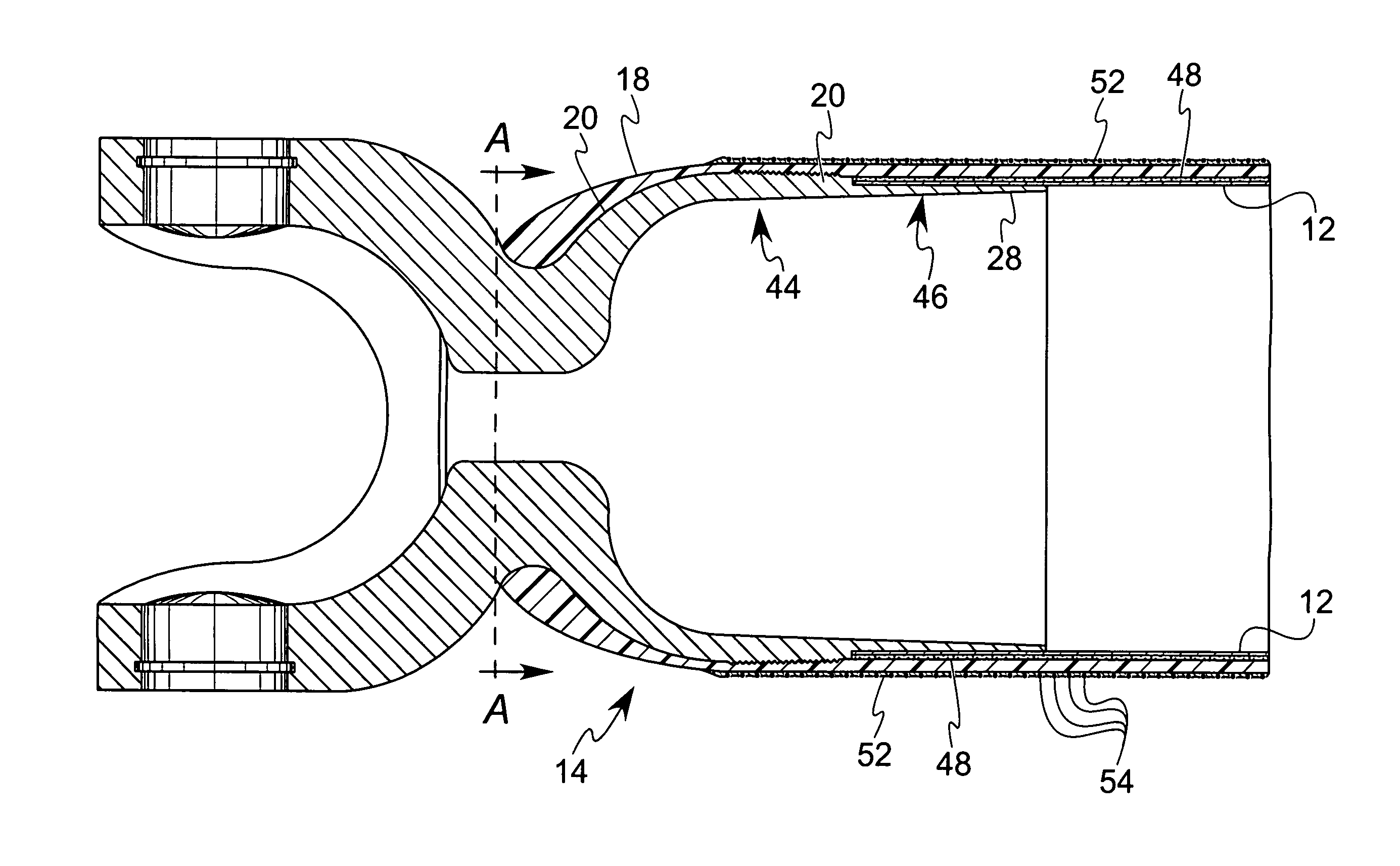Load sharing composite shaft
- Summary
- Abstract
- Description
- Claims
- Application Information
AI Technical Summary
Benefits of technology
Problems solved by technology
Method used
Image
Examples
Embodiment Construction
[0020]Referring to FIGS. 1–3, the composite shaft 10 of the present invention is illustrated and, as is described further below, is particularly designed for use in high speed, high torque applications, such as in use as a vehicle drive shaft.
[0021]The shaft 10 comprises an inner tube member 12, a pair of end pieces 14, 16 located at either end of the inner tube member 12, and a composite material overwrap 18 formed of resin and fibers covering the inner tube member 12 and a portion 20, 22 of each of the end pieces 14, 16, respectively. The inner tube preferably comprises a thin metal tube and defines opposing open ends 24, 26. Further, each portion 20, 22 of the end pieces 14, 16 includes a knurled surface 21, 23 which is preferably 0.015 inch deep and 0.015 inch high to facilitate formation of a mechanical connection between the composite material 18 and the end pieces 14, 16.
[0022]Each of the end pieces 14, 16 preferably is formed as a turned metal component, such as on a CNC (co...
PUM
 Login to View More
Login to View More Abstract
Description
Claims
Application Information
 Login to View More
Login to View More - R&D
- Intellectual Property
- Life Sciences
- Materials
- Tech Scout
- Unparalleled Data Quality
- Higher Quality Content
- 60% Fewer Hallucinations
Browse by: Latest US Patents, China's latest patents, Technical Efficacy Thesaurus, Application Domain, Technology Topic, Popular Technical Reports.
© 2025 PatSnap. All rights reserved.Legal|Privacy policy|Modern Slavery Act Transparency Statement|Sitemap|About US| Contact US: help@patsnap.com



